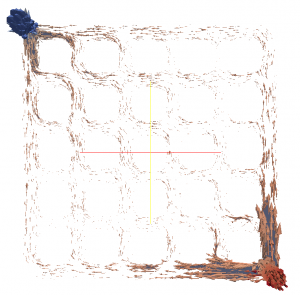Fuel cells
Fuel cells are being developed to power passenger vehicles, commercial buildings, homes and even small devices such as laptop computers. Apart from being clean, these systems offer a unique opportunity for energy independence, highly reliable energy services and economic benefits. In order to improve fuel cell design and operation, it is necessary to learn more about the mechanisms that cause the performance degradation, as for example, the losses due to mass transfer limitation and fluid dynamics characteristics. The characteristics of the total pressure drop in the flow field have a significant effect on the fuel cell system power consumption.


Our Team has worked to investigate the performance of a fuel cell anode flow bed, focusing mainly on the flow field distribution in the anode compartment. Fuel cells contain dozens or even hundreds of fine channels to distribute the fuel flow over the surface of the cell. The shape, size and pattern of the flow channels can significantly affect its performance. For this purpose, a model based on the computational fluid dynamics (CFD) technique is developed. Such a study is very helpful for the characterization and the improvement of the dynamic behaviour of the fuel cell. Distributions of various quantities such as the velocity, streamline, pressure fields, residence time are calculated and analysed. The performance of the anodic bed is studied in terms of flow. The objective is to develop a CFD model for the study of the flow and transport phenomena in three different typical anode fuel cells and modify each geometry by smoothing the flow path in order to improve the hydraulic performance of the anode bed flow field, in terms of pressure drop, flow distribution and residence time. The numerical methodology is based on numerical simulations of the single phase Navier-Stokes equations.